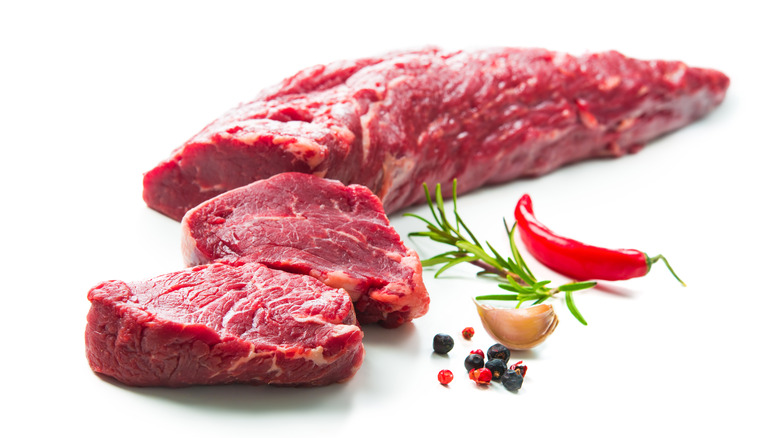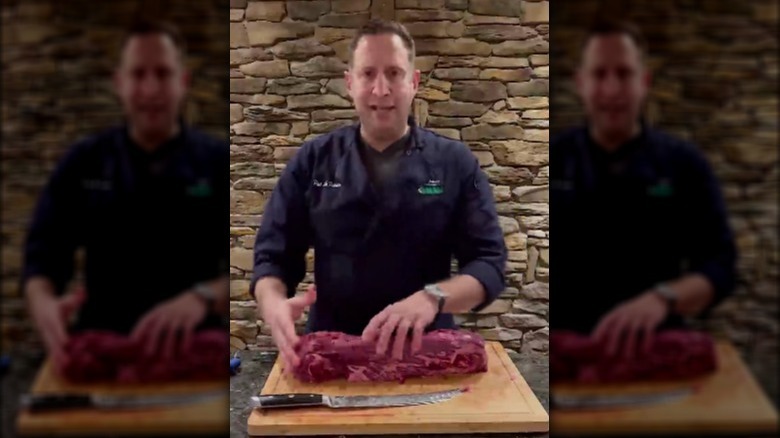Everything You Need To Know About Beef Filet, According To A Butcher
Beef can easily be ruined if it's not prepared and cooked correctly, especially if you're working with an unfamiliar cut. But fortunately, experts like Pat LaFrieda have you covered. The LaFrieda name is well-known by restaurant operators in the tri-state area for three generations. La Frieda has been called "the first celebrity butcher," and you might also know Pat's name from several restaurants in the region to which he licensed his name, including Pat LaFrieda's Chop House at Citi Field. La Frieda Meats supplies proteins to restaurants along the East Coast, Las Vegas, Los Angeles, and Chicago, as well as to several burger restaurants, including Shake Shack, per Eater New York. His massive facility butchers and dry-ages millions of dollars worth of meat at any given time, LaFrieda told CBS Saturday Morning in February. So when it comes to meat questions, LaFrieda is the one to ask.
As part of a three-part series on Instagram called "So You Wanted to Hear from The Butcher," La Frieda walks his followers through preparing a filet roast. Filet is one of the most prized cuts of beef, as it is the most tender of all cuts, per the Chicago Steak Company.
With a whole beef filet on a cutting board in front of him, LaFrieda explains that every animal has two filets, totaling about 14 gross pounds. This is the PSMO (pronounced "pismo," and standing for "peeled side muscle on.") In the video, LaFrieda is preparing a tenderloin filet for roasting.
LaFrieda prepares a roast
Pat LaFrieda's Instagram video yields a lot of information about handling a whole beef tenderloin.
LaFrieda demonstrates the first step in preparing the filet roast, removing the side muscle from the tenderloin. Rather than tossing this tougher muscle, he sets it aside to be used for beef stew or as ground beef. He then removes the thin layer of silver skin (this helps attach the muscle to bone) that's revealed when the side muscle is removed. At this point, he advises trimming some of the fat. Once the filet is trimmed, it weighs about 4 1/2 lbs, enough to feed about seven people. At the narrow, tail-end of the filet, LaFrieda makes a half-inch crosswise cut, then folds the tail under the rest of the filet to create a roast of uniform thickness. LaFrieda then demonstrates how to tie the roast, creating butcher's knots every 1 1/2 inches. Although he doesn't explain why this step is important, Food Republic says tying the roast helps to preserve its nice, round shape and keeps the juices in the roast.
LaFrieda's followers, some of whom sounded like butchers themselves, praised his flawless technique. "Wow, nicely done," said one follower. Another commented, "Thanks for sharing the knowledge! It's good to know how to handle your meat! And ... [a] huge knife!" "Thank you, priceless information," wrote another. A big fan said, "I love this butcher!" But the best cheeky comment had to be: "Well done! No pun intended!"

